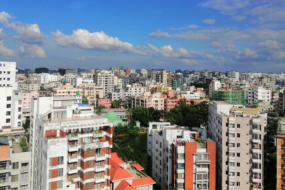The recent operationalisation of Rajiv Chowk ( NH8 Gurgaon)- Sohna 6-lane expressway has opened new avenues of real estate growth for not just South of Gurgaon or Gurgaon as a whole but for the entire National Capital Region . This has also brought into spotlight the significance of connectivity in driving real estate growth and property prices.
The 21 km expressway built at the cost of Rs 2000 crore by the NHAI, is strategically located with its connectivity to NH8 and Kundli-Manesar -Palwal Expressway. Further, the Delhi-Mumbai Expressway passes through Sohna expressway. Next year when Dwarka Expressway becomes operational, Sohna expressway will derive the benefit of its linkage with it. Further, in the coming years, Sohna Expressway will be connected to Yamuna Expressway through Palwal and DND Noida. Already South of Gurgaon has witnessed double digit appreciation over the last 8 years and now with Sohna expressway , property appreciation will get wings and real estate development in the region will get fast tracked.
That infrastructure and connectivity hold the key to real estate growth and the overall economic development, is now an established fact. The Modi government is putting a lot of emphasis on this which is clearly evident from the record allocation of Rs 7.5 lakh crore for funding infrastructure development in the 2022-23 budget of the central government. For providing a big push to public investment in infrastructure, , the Centre has formulated a mega Rs 1 lakh crore National Infrastructure Pipeline programme over five years. The FY23 budget of the Union Ministry of Road Transport & Highways has made an allocation of Rs 1,99107 crore for expanding the national highways network by 25000 km in 2022-23.Further,
The highways and expressways have a direct linkage with property development. According to the findings of a JLL study, national highways offer great opportunities for real estate development with property appreciation of more than 15%. There is land price appreciation ranging from 60-80% in micro markets in the short term and 20-25% as facilities like restaurants, food courts, retail outlets, EV charging stations, warehouses, logistics parks, and commercial developments become operational across highways.
Keeping this in mind, NHAI. has formulated a Rs 4800 crore 5-year mission to boost development of over 600 properties across India spread over 3000 hectares, with private sector participation. The hottest being Delhi-Mumbai Expressway with 94 sites for property development in addition to over 550 sites chosen for development across an existing and under-construction network of highways, opening up immense opportunities for property developers, investors and facility operators. The pre-approved sites with no requirement of change in land use with up to 30-year lease tenure option and flexible project development norms, promise lessee returns to the tune of 15-30%.
As part of the connectivity push, Transit-Oriented Developments (TOD) , which integrate land use and transit planning to develop planned sustainable urban growth centres through high-density mixed land use, have a major impact on real estate growth and property prices. A typical TOD is around a bus, train or metro station, surrounded by relatively high-density development., integrating the principles of urban design, open spaces and energy efficiency for quality sustainable living. In Delhi- NCR, a metro corridor has been planned to interconnect the peripheral urban centres of Gurgaon, Noida, Ghaziabad, Faridabad etc.
As properties having proximity to highways and transit-oriented developments have greater attractiveness and enhanced real estate value, the future development and growth of real estate will depend upon how effectively and efficiently we implement our policies related to infrastructure, connectivity and transit-oriented developments.



